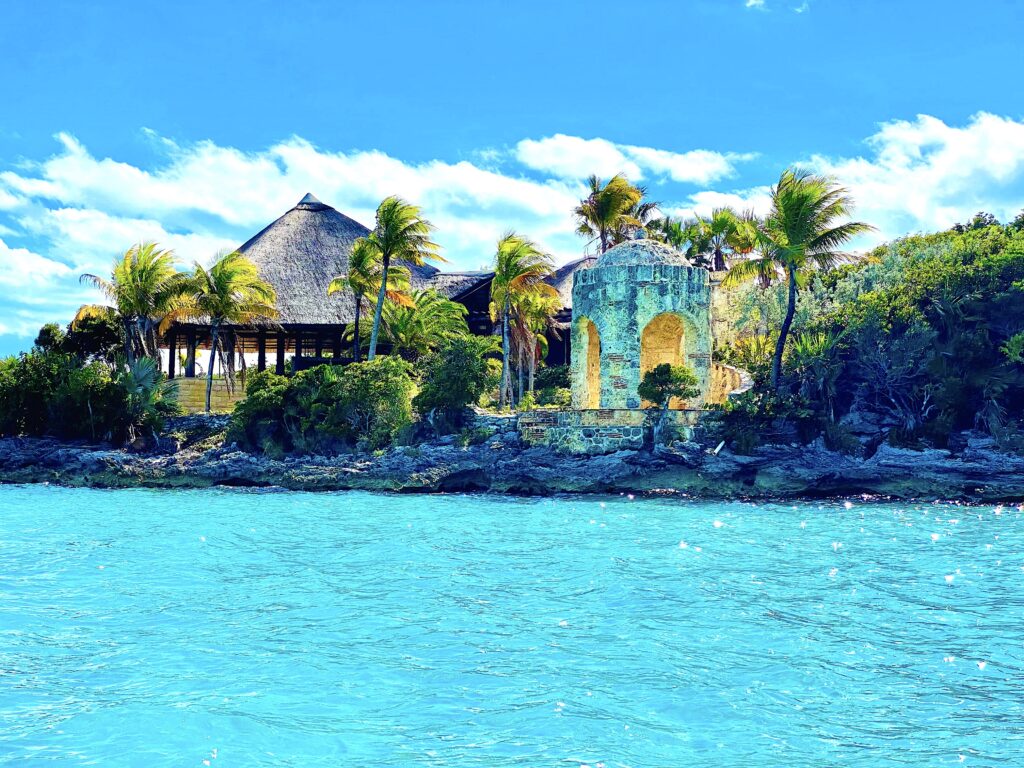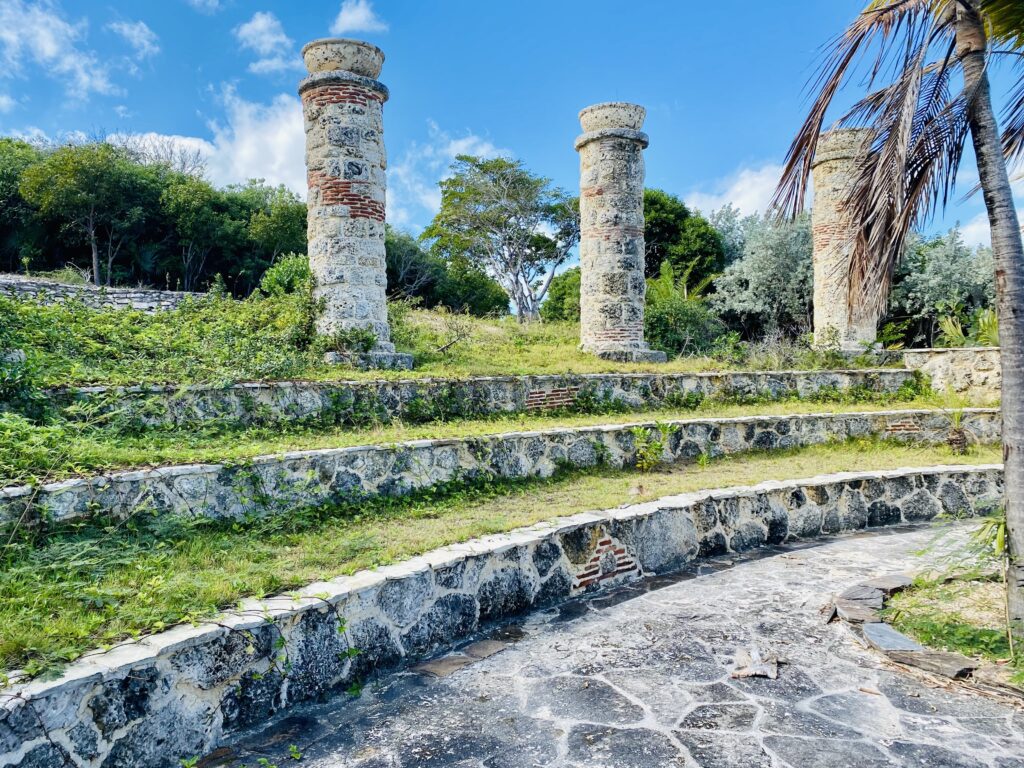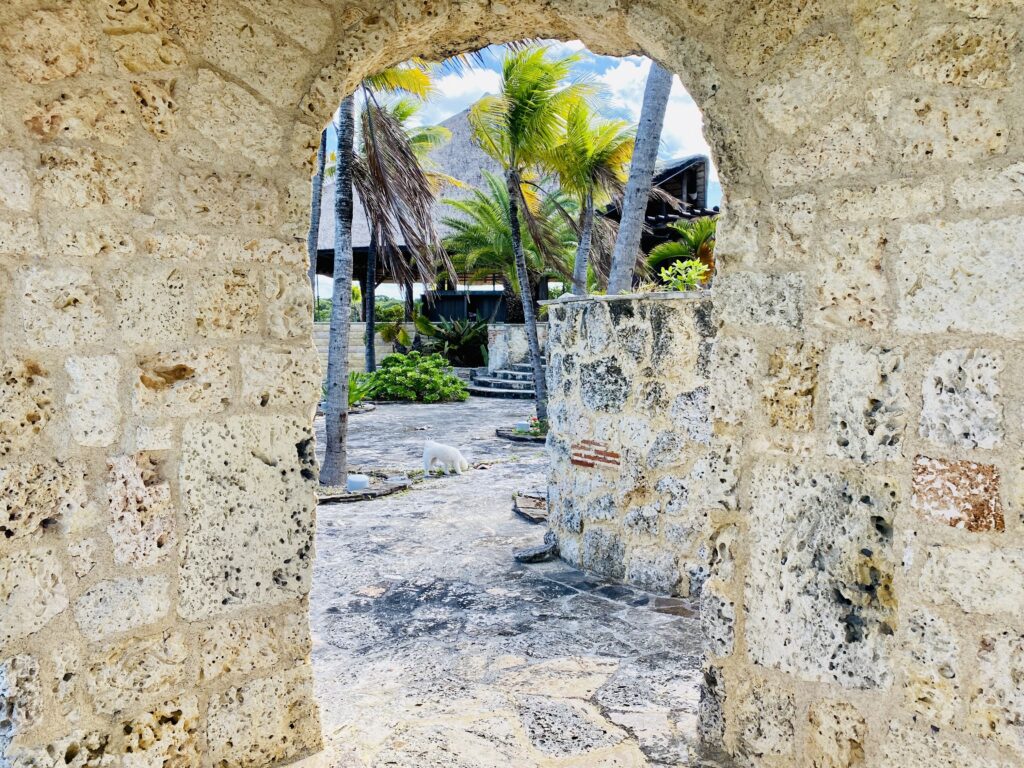A great vision was framed for Crab Cay, one of lushness and luxury, but it never came to fruition. It’s a story worth telling, but seeing this scenic cay tells the story even better.
Crab Cay is a sizable and hilly stretch of land with a little over 182 acres. It is located just off the eastern coast of Great Exuma, and south of Stocking Island in Elizabeth Harbour. It is a jewel of a cay with much natural beauty.
Sedona Resorts originally planned to build a luxury, “eco-friendly”, resort community on this quaint island called The Resorts at Crab Cay. They started the project by constructing an elaborate bridge connecting the mainland of Great Exuma with Crab Cay. They cleared away acres of trees to begin an infrastructure of roads throughout the island, and leveled many lots in preparation for building extravagant dwellings with spectacular views.


Sedona Resorts also constructed an elaborate clubhouse overlooking turquoise waters and white sand beaches. It was going to be a most impressive community, but this is about as far as the builders got. After doing some online research, I discovered that the project ran into trouble and was terminated when the financial crisis hit the United States in 2007. Construction came to a grounding halt, but some beautiful ruins remain.




















The Bahamian-style clubhouse wasn’t the only impressive feature to be built on the island. There was going to be a first-class marina for mega yachts, private estates with beach front properties, beautiful walking paths, a boutique hotel, and luxury spas. All this would have brought restaurants, fitness facilities, and specialty retail shops, surrounded by world class beaches. Sounds like the lifestyle of the rich and famous.
The last remarkable structure we toured was what appears to have been the makings of a lazy river cut through the rocky edge of the island. This would have been a breathtaking feature for tourists and residents of the cay. To this day, it stands breathtaking, with unprotected water that have become home to turtles, coral, and a variety of healthy sea life.


These aren’t the only ruins that remain on Crab Cay. There was an earlier settler, Sir William Walker, who built upon this island first. Walker was a Loyalist who came to the island in the late 1700’s. During his life on the cay, he built a stone house, separate kitchen, botanical gardens, entrance pillars, high stoned walls for protection, and platforms for cannons. My guess is he was trying to safeguard himself from pirates. Many of the exotic trees and plants we see on the island today were actually imported to Walker in the form of cuttings from British ships. He certainly left quite a mark.


It was incredible to see these new and old ruins dotting the landscape together. I visualized what this built-up island might have been like. It’s possible that new developers will revitalize this project. I found evidence of such plans online, but when or if that happens is rather unknown.
When examining these ruins and contemplating this unfinished project, I was reminded of Jesus’ words that He spoke to the crowds about being His disciples. He said:
“For which of you, intending to build a tower, does not sit down first and count the cost, whether he has enough to finish it— lest, after he has laid the foundation, and is not able to finish, all who see it begin to mock him, saying, ‘This man began to build and was not able to finish’?….So likewise, whoever of you does not forsake all that he has cannot be My disciple.
Luke 14:28-30, 33
The developers of Crab Cay were not able to finish the project they set out to build because they had not fully counted the costs of unexpected financial troubles coming upon them. From this, we can learn how important it is to have the foresight before you start a project to ensure that you have the wherewithal to finish it.
But there is a more important cost than building a resort community that we need to count. That is the cost of following Jesus Christ as His disciple. Counting the cost means agreeing to His terms. It means that we no longer follow our way or the world’s way (Matthew 7:13-14), but Jesus’ way. It means we may need to forsake certain relationships, material things, aspirations, and desires. It means that we must persevere when the going gets tough and not abandon our walk with the Lord when we face sufferings, trials, peer pressure, or persecutions. It means we don’t just follow Jesus for His gifts, but we follow His life and death. We give up control of our lives to Him. If we are going to be disciples of Jesus Christ, we must first count the costs to see if we are able to forsake all and follow Him to the end. Just something to ponder! What is Jesus calling you to forsake so that you can truly be His disciple and finish well!
